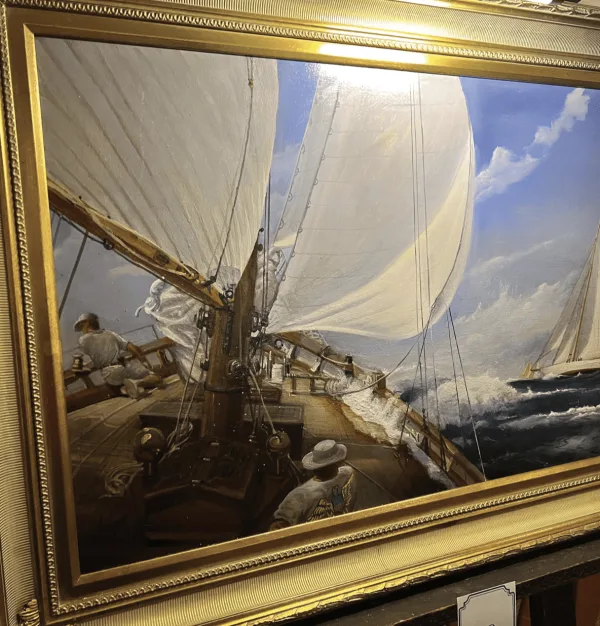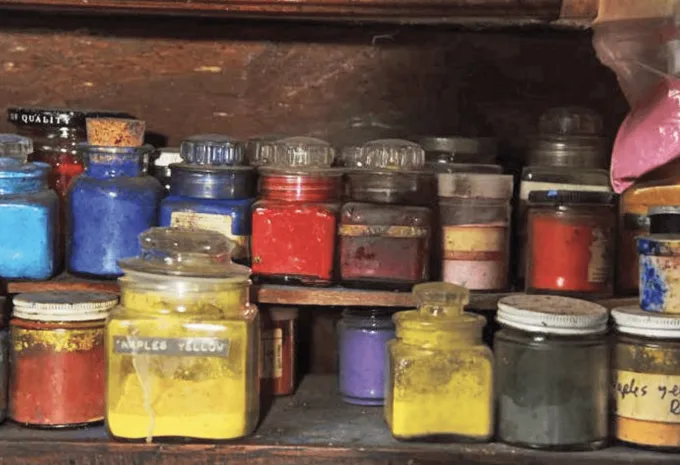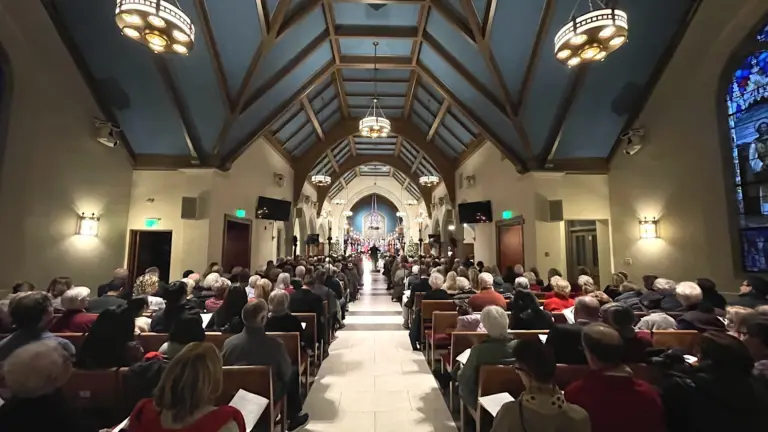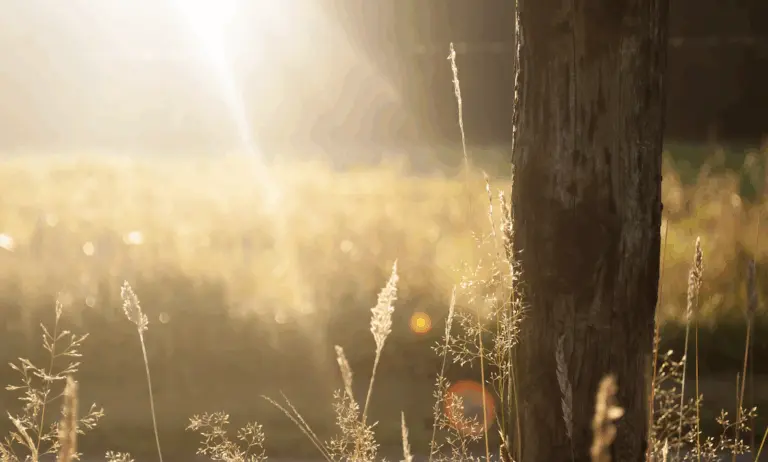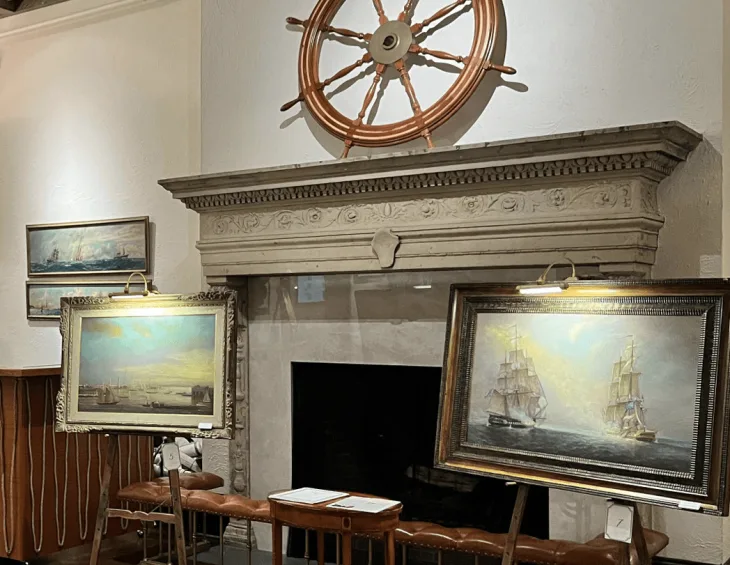
By Emma Barhydt & Anne W. Semmes
Earlier this month, the Indian Harbor Yacht Club opened its East Room to an exhibition that felt both painterly and personal—a tribute to sea, sky, and the craftsmanship that unites Greenwich’s artistic and maritime traditions. The show, Marine Paintings by Peter Layne Arguimbau, ran from October 9 through October 12, presenting a suite of luminous seascapes in a setting that could not have been more fitting.
Organized by the club’s History & Collections Committee, the exhibition celebrated not only an artist but a shared heritage. Members and guests filled the East Room for an evening of conversation and admiration, the glow of Arguimbau’s canvases reflecting softly across polished wood and brass. The evening felt in step with a larger Greenwich story—of artistry shaped by place, of community traditions sustained through participation, and of gratitude toward those who have tended them over time.
Commodore Sarah Stearns Fey welcomed guests with an introduction that set both tone and spirit. “It’s my absolute delight to welcome you and to introduce Peter,” she said, “sailor, Indian Harbor member, and one of America’s most accomplished marine painters.” She reminded the audience that “at just eight years old, Peter was grinding pigments for his father, who was a portrait painter and trained under Frank Mason at the Art Students League.”
Fey described how the young artist “became captivated by the Old Masters, beginning what would become a lifelong quest to rediscover the lost alchemy of oil painting— experimenting with centuries-old varnishes and pigments, traveling to Europe to examine works by Rembrandt and Rubens.” Painting, she said, for Arguimbau is “a technical and spiritual pursuit where rhythm, motion, and light merge into something timeless.” Working from his red barn studio on the Greenwich–Stamford line, he continues to refine “those techniques that connect today’s art to the golden age of painting.”
Her remarks framed the evening not only as a celebration of an artist’s achievement but as a reminder of how deeply the arts are woven into the civic life of Greenwich— how individual craft and community heritage sustain one another.
Among the eleven paintings displayed were Brooklyn Bridge Moonlight, New York Harbor Sunset, Gallant off Bear Mountain Light, and Gloucester Fishing Schooners. Two commanding scenes of classic racing yachts drew particular attention: one viewed from the deck of a vessel cutting through the waves, the other depicting twin boats under a tranquil morning sky. Arguimbau captures not only the geometry of rigging and sail but also the vitality of motion—the exhilaration of wind and water meeting in perfect rhythm.
Born in Darien, Connecticut, in 1951, Arguimbau was steeped in art from childhood. His father, Vincent Arguimbau, was a portrait painter who began teaching him early. In 1958, family friend and Art Students League instructor Frank Mason introduced young Peter to the Maroger Medium, a resinous gel derived from centuries-old recipes believed to replicate the lost varnishes of the Old Masters. That discovery would define his artistic life.
At the reception, Arguimbau spoke warmly and with humor about that early determination. “I did have a face-off with my dad at 14,” he recalled. “I won a prize exhibiting in the Westchester Art Show, and they gave a purchase prize and I won both the purchase and the Best in Show. So that left me with $600 in my pocket. My father just said, you can’t have it—you’ve got to go to college and then you can think about art. So I said, I’ve thought about it. I’m going to change my name and sign with Ains Lane, Morocco Lane, which was my pen-pal name. My dad was furious, but I just kept that a secret to myself until I left home at 19.”
He laughed, then turned to the subject that has long fueled his work: the science behind paint itself. “I was sitting on my stoop in my studio in 1987,” he recalled, “and an acquaintance came to my studio and said, ‘I want to learn how to paint on a viola … because I make these instruments and I want to dress them up.’ So he gave me a folio of antique fiddle recipes.”
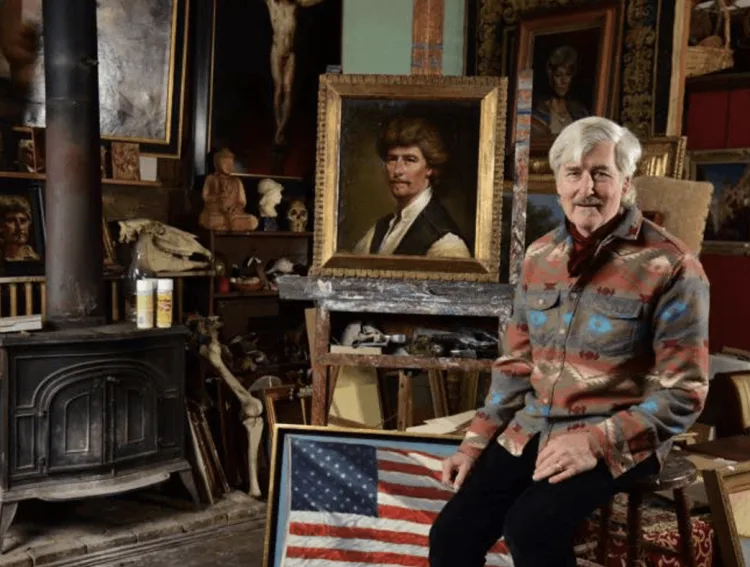
That folio, Arguimbau explained, contained formulas for varnishes once used by violin makers—and by painters centuries earlier. “It’s very easy to make,” he said. “You just make a soap out of linseed oil and resin, and there’s a trick that you have to dry the composition. When you get the soap exactly with no moisture at all—if you have any moisture of any kind, even from the spoon that you’re mixing it with—it will flatten out what would be a gel formula. It would not gel.”
That elusive chemistry, he said, is what gave the Old Masters their speed and radiance. “These great masters like Rubens could paint a 24-by-30 painting in a day. It’s incredible,” he said. “So what you have to bring to the table is you have to know how to draw really well. You have to know how to take the steps of painting a plein-air painting and bring it to your studio.”
That same blend of discipline and inspiration would later define his own work. Arguimbau traced his devotion to the sea back to one defining moment. “My aunt took me to the tall ships in ’86 when she got me up at five in the morning,” he said. “It was a blue day that was just perfect, and I filled up two or three books of drawings of two boats that day, and I started my history of marine painting.”
Since then, that history has become a life’s work. Arguimbau continues to grind his own pigments and cook his own mediums, carrying forward the layered traditions of Rembrandt, Rubens, and the Hudson River School. His forthcoming book, Rembrandt’s Lost Secret, delves into how those centuries-old glazing methods capture the prismatic play of light that defines his art.
For Greenwich, the exhibition offered something larger than an evening of fine art. It reflected the strength of local institutions that continue to give artists, audiences, and traditions a home. The History & Collections Committee described Arguimbau’s work as “a mastery of Old Masters’ techniques applied to a lifetime on the water.” That spirit of mastery and continuity mirrored the club’s own: a commitment to craftsmanship, seamanship, and care for what endures.
Arguimbau’s paintings speak through patience. Every layer of glaze, every reflection, every controlled shimmer of sky reveals a deep attentiveness to time and craft. The result is not only a view of the sea but an understanding of it—its restlessness, its calm, and its quiet power to hold and reflect the light within.
In the same way, the community that gathered at Indian Harbor reflected a shared understanding of what sustains Greenwich’s cultural life: respect for history, support for working artists, and an instinct to keep art close to where it belongs—within the life of the town itself.
Those who wish to see more of Arguimbau’s work or learn about his ongoing projects can visit his studio and gallery at Arguimbau Art, located on the Greenwich waterfront, or explore his portfolio online at www.arguimbauart.com where his marine paintings, portraits, and restorations continue to honor the classical traditions that shaped them.
